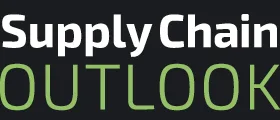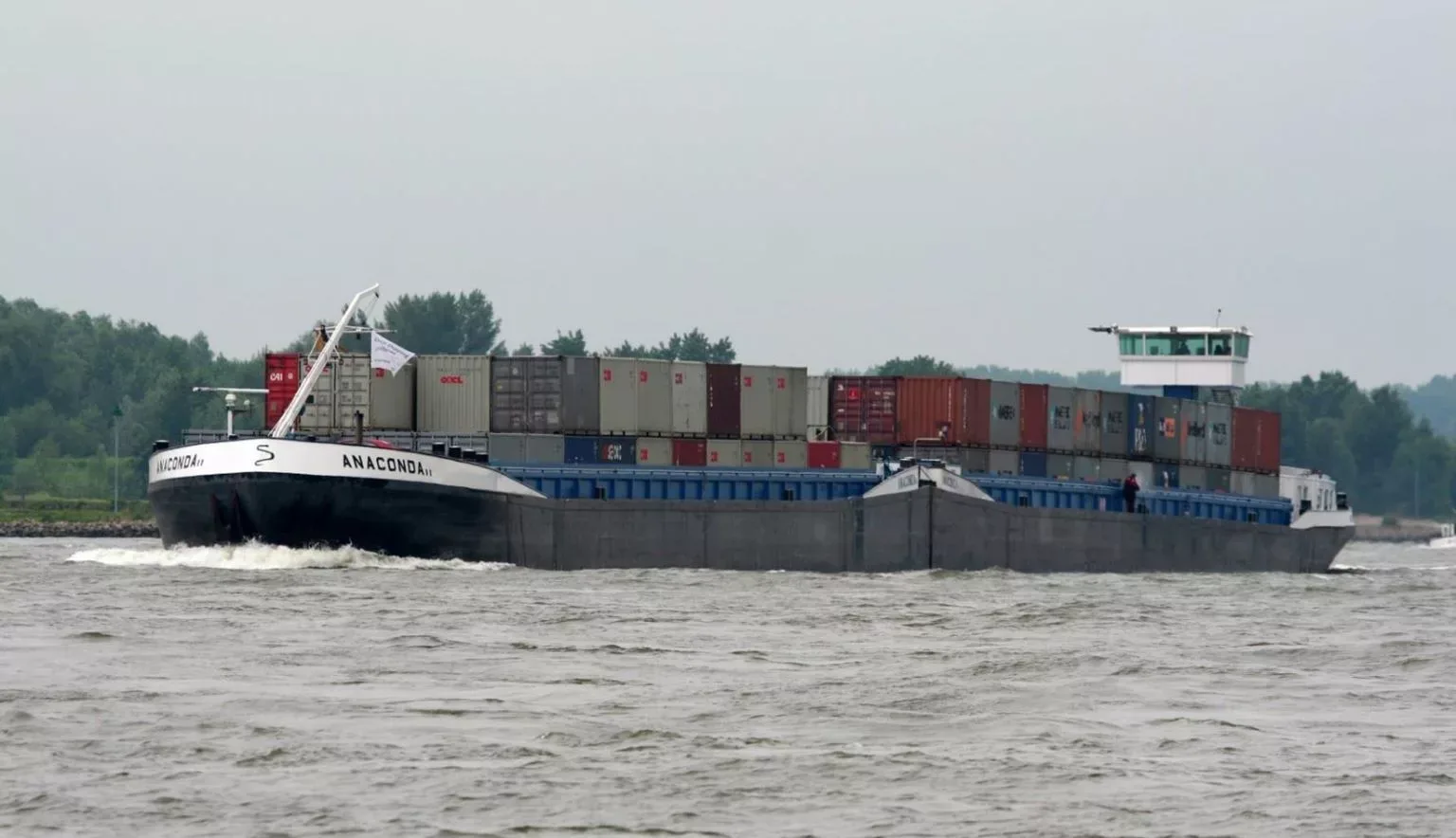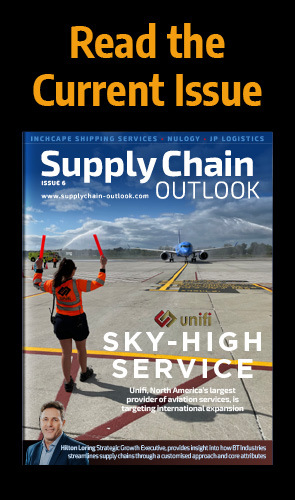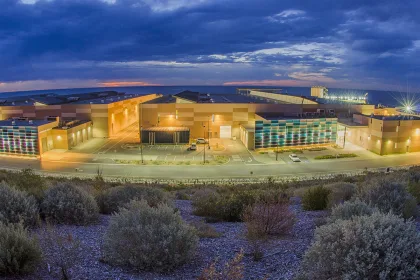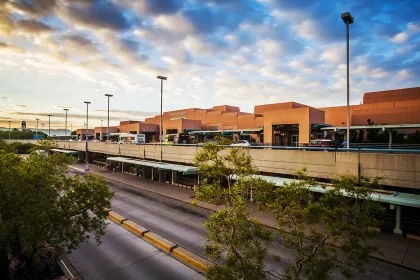We speak with various members of the Romanian Government and significant partners for their insight into the future of autonomous shipping, and Trading Line and Inland Shipping’s development of the Innovation Centre for Remote Navigation.
Q&A WITH MR. IONUT PUCHEANU, MAYOR OF GALATI CITY
Could you tell us more about the construction of the Pilot Centre taking place in Galati?
Mr. Ionut Pucheanu (IP): Building a Shore Control Centre to remotely operate the vessels on the Danube is a private project that benefits from the full support of both local and national governing bodies.
The project consists of the construction of a building with a research and command centre that will be able to operate with up to 100 consoles. This will also involve the development of software and hardware technology on the ground and on board the ship or crane for remote control or autopilot in the future. In addition, practical training will be provided in a virtual environment and through multi-player simulators. The multi-player simulator has the ability to simulate an operation of up to 10 participants simultaneously using different types of ships (river and sea).
Furthermore, the project intends to deploy a ground station of Starlink – the satellite internet service developed by SpaceX and Elon Musk. This has just been authorised in Romania by Sabin Sărmaș, the chairman of the IT commission in the Chamber of Deputies. Consequently, we are one step closer to having internet access across the entire country, with fibre optic and large-scale internet via any satellite.
What makes Danube the ideal place to test and deploy new technology of Remote Sailing, Autonomous Sailing, Data Mining and Digital Twin?
IP: Firstly, this is due to the Danube’s significance as the second longest river in Europe.
Unlike the other major rivers of Europe, the Danube crosses Europe on a west-east direction, thus amplifying its position as an economic and geopolitical strongpoint of Europe. The geopolitical reality means that the Danube can connect Western, Central and Southeastern Europe. The construction of the Danube – Black Sea canal and the Rhine – Main – Danube canal has given extra economic importance to this waterway – it could be said that Europe has a unique river system that will support economic relations within Europe and between Europe and Africa or the Middle East. Presently speaking the Danube – Black Sea canal is not necessarily economically efficient, but its future perspectives and its environmental role (avoiding transit in the Danube Delta) have made it an important spot on the economic, geopolitical and strategic maps.
Secondly, water transport is by far the cheapest and most efficient option. The river is suitable for almost 2,600 km of navigation, between Ulm and Sulina. It is the safest shipping route due to its sandy bottom, plus it is less crowded than the Rhine, which will make testing new technologies less disruptive to the shipping industry. Finally, the Danube allows for more crowded shipping – meaning several ships can traverse at the same time. All these are sufficient reasons for this new naval technology to be tested on the Danube navigation.
How will digitalisation improve shipping operations and why is this innovation so important for the city?
IP: The concept of remotely operated, unmanned, and autonomous ships is creating increasing interest in the maritime domain, promising safety, increased efficiency and sustainability. This will concentrate a new specialised labour force within the city, since the naval pilots will be employees of a Galati company. It will connect Romanian companies to technologies implemented at a European level and put Galati on the map for introducing modern technologies to the naval industry.
What are the benefits of using the Seafar high-tech control centre to control ships autonomously?
IP: The vessels sail with Seafar’s hardware and software automatically, supported by the Shore Control Centre where the team of engineers and captains manage the vessel. The operators in the control centre have a range of high-tech systems based on artificial intelligence, sensor fusion and object detection at their disposal to ensure safe navigation. By integrating these new services and technologies, shipping companies and operators can continuously improve their operational efficiency: reducing operational costs, enhancing competitiveness, and expansion of the navigation possibilities.
This will bring multiple benefits in terms of allowing the training of new captains to be done faster and in conditions of increased safety, minimising the risk of human error. It will also lead to greater collaboration between the institutions that coordinate naval transport on the Danube.
Through the integration of the Seafar control system and services, the capabilities of a vessel can be expanded by optimising crew time efficiency on board and operating with less crew. The optimal performance of vessels can be achieved, leading to unmanned navigation with automated vessels on fixed trajectories with the goal to increase the competitiveness of small sized vessels.
A major advantage of using remote support is that vessels can expand their operational time per year. In theory, having remote access to the vessels may also mean that operations could be controlled from anywhere in the world. Using remote support on demand creates a significant increase in operational efficiency. Consequently, idle time is dramatically reduced (up to 500 working hours per year). Seafar’s automation hardware and software components can be integrated on vessels up to 135m for inland and coastal navigation.
Will the new shore control centre provide employment opportunities for Galati? For instance, I understand that women will be able to operate this technology?
IP: This technology creates a gender balance between men and women, creating the premises for women to enter this male-dominated industry. Today, women represent only 1.2 percent of the global seafarer workforce, which is a 45.8 percent increase compared to 2015.
Furthermore, this will be an opportunity to reduce ‘brain migration’, and retain graduates from the Faculty of Naval Architecture. This is the only such faculty in Romania, with a tradition of over six decades in higher education, training naval architects recognised worldwide for long, motivational and fascinating careers. This Galati institute ensures superior technical training necessary for the research, design and construction of ships and marine structures.
We will continue to work internationally to lead and develop the safe, sustainable and intelligent ships of tomorrow.

Q&A WITH MR. ALIN NICA, VICE PRESIDENT OF TRANSPORT INFRASTRUCTURE, PNL & PRESIDENT OF TIMIS COUNTY COUNCIL
Mr. Alin Nica stands as Vice President of Transport Infrastructure for PNL – Romania’s National Liberal Party. Overseeing the supply chain’s development at a national level for governmental political strategy, Mr. Nica is also President of the Timiș County Council. We discuss his support of the Remote Piloting Centrum in delivering sustainable cargo transportation for the region.
As President of the Timiș County Council, how will the Remote Piloting Centrum develop sustainable cargo transportation for the region?
Mr. Alin Nica (AN): The Bega canal in Timiș County connects the Timișoara Danube and the Black Sea. This is why it is very important for us to think of innovative modes of transport that will make it much easier for goods and people to travel by water. Technology is taking the place of man in many areas and shipping cannot avoid this. Remote ship management is practically a revolution in the field of shipping which will lead to the development of this safe and efficient means of transport in the next period. But it also opens up new perspectives for the integration into the naval labour market of other categories of people with knowledge in the field of Information Technology, and who can be of real use in this new way of driving ships.
From a national perspective, are you excited for the changes that this project will bring?
AN: Of course. We want to promote this new way of shipping and Romania wants to revive its long tradition in the field of freight transport. This tradition can be renewed now that we are becoming pioneers in the concept of remote piloting, especially since there are many urban centres in Romania where Information Technology is an engine of economic development. This means that we have the necessary workforce to make us competitive in this innovative field.
How will the Remote Piloting Centrum project support the objectives of your local government programme, ‘Timiș at European level’?
AN: Our vision is for Timiș County to become a model of competitiveness both at a national and European level through smart specialisation. This means choosing the areas in which we can be the best and investing wisely and intelligently in those directions. That is why one of our European-funded projects, which we are implementing, is to make the navigability of the Bega canal a gateway for goods and people by water in our county and to develop this mode of transport, which has not been widely used until now.
Finally, could you tell us more about your involvement with Trading Line in this project?
AN: Although we do not have a contractual relationship with Trading Line, the company’s idea to build such a remote piloting centre seems very interesting to me and in line with our objectives and projects.
Q&A WITH MR NIKOLAOS P. VENTIKOS, SCHOOL OF NAVAL ARCHITECTURE AND MARINE ENGINEERING, NATIONAL TECHNICAL UNIVERSITY OF ATHENS (NTUA)
As Head of the Naval Engineering Specialisation Committee of the Technical Chamber of Greece, and a member of both the National Technical University of Athens (NTUA), and the School of Naval Architecture and Marine Engineering, Mr Nikolaos P. Ventikos represents a key partner in the development of autonomous shipping on the Danube.
As one of the partners involved in the development of autonomous shipping, how do you envision the future of the Danube as Europe’s first autonomous river?
Nikolaos P. Ventikos (NV): Inland waterway transport (IWT) in Europe represents only six percent of modal share, a predicament that the Commission has been repeatedly trying to mend since 2001. To that end, autonomous vessels are a solution that can induce a compelling modal shift towards IWT, through the employment of entirely redesigned logistics chains, and business models. The Danube basin is a region that has the potential to release an immense latent demand for freight transport throughout European inland waterways. Besides being part of the Trans-European Transport Networks (TEN-T), the Danube’s full exploitation will enable a direct international connection between the North and the Black Sea, spanning across Europe. Cargo vessel traffic in Danube is currently limited, especially compared to its counterpart, the Rhine. Hence, the Danube provides an excellent opportunity for utilising autonomous vessels that can be monitored and controlled via remote control centres (RCC), and aid with the wider impact and exploitation of autonomous maritime technologies in Europe.
Can you give us some insight into the deployment and testing of algorithms for the future?
NV: The tendency to make the production process more efficient and less costly is evident. To achieve this, safety or other issues have to be identified as early as possible in the design phase to reduce the iterations in the systems’ design process, hence making it more efficient. The evolution of technology assists towards this direction through the utilisation of virtual reality, however real scale model testing will always be considered more accurate. I believe that the future of deployment and testing of algorithms will be comprised by a combination of Software In the Loop (SIL), Hardware In the Loop (HIL) along with real model validation Model In the Loop (MIL). SIL deals with the code/algorithm validation to identify coding/programming errors, HIL deals with an integration test of the system, i.e. testing the integration and operational level of a system’s algorithms and sensors in a virtual world, and the latter MIL deals with the functional validation of an algorithm/system on a real scaled model.

Q&A WITH MR. ONUT ATANASIU, VICE-PRESIDENT OF COMMISSION FOR EDUCATION IN ROMANIAN PARLIAMENT
Mr. Onut Atanasiu is the Vice-President of the Commission for Education in Romanian Parliament. We hear his opinion on his goals for Galati city in light of the centre’s development from an educational perspective.
What are your plans to develop education in Galati City in respect of Trading Line’s and Inland Shipping’s plans to construct the Innovation Centre for Remote Navigation?
Mr. Onut Atanasiu: My former student, Paul Ivanov’s plans in the development of remote piloting refer to things that we want to build together so that we can make the city of Galati a pole of distance navigation. We also believe that this could lead to the development of the city, the regional and even the national economy.
Q&A WITH MR. IOAN-SABIN SĂRMAȘ, PRESIDENT OF COMMISSION FOR INFORMATION AND COMMUNICATION TECHNOLOGY FROM ROMANIAN PARLIAMENT
Elected in the Romanian region of Cluj – which is acknowledged as the country’s answer to Silicon Valley – Mr. Ioan-Sabin Sărmaș is President of the Commission for Information and Communication Technology. Since his election, Mr. Sărmaș has been committed to introducing an innovative future for Romania and its younger generations.
In the last months, under Sărmaș’s leadership, the Commission approved a few essential laws that boost Romania’s communication infrastructure, such as Communications Code or 5G Law. In addition, most recently, ANCOM approved the use of StarLink’s services in the country as an alternative for broadband services in Romania.
Now, Trading Line and its partners are in the process of convincing StarLink to construct the first ground station in the Innovation Centre for Remote Navigation. This will significantly improve internet connection services throughout Romania and neighboring Ukraine, thereby developing a sustainable IT and Communication Technology network that many business sectors will benefit from.
In light of Trading Line’s and Inland Shipping’s project to build and develop the Innovation Centre for Remote Navigation, where do you suggest that Starlink deploys its first ground station?
Mr. Ioan-Sabin Sărmaș: First of all, I am content to see more and more companies in Romania involved in innovative projects. This should be among the top priorities of our industry.
While it is impossible for me to suggest to Starlink where to deploy the ground station, they will probably look after the fibre optics hubs like Bucharest, Brasov, Galati, Sibiu, and the proximity of communities they are interested in.
I recently found out about an initiative of Inland Shipping which, from my understanding, is in touch with the Municipality of Galati to find a proper location where they will propose that StarLink deploys a ground station. As mentioned before, Galati city is among the fibre optics hubs from Romania, with fibre optics in neighbouring countries. In particular, the city also has a telecommunications tower with a radio redundancy network that can be used as backup links in case fibre optics become damaged.
I hope they will succeed in their endeavour cause the sooner we have the first Starlink deployment in Romania, the better.

Q&A WITH IRENE ROSBERG, PROGRAMME DIRECTOR, EXECUTIVE MBA IN SHIPPING LOGISTICS, COPENHAGEN BUSINESS SCHOOL
Irene Rosberg is a force in the international shipping industry. Most recently, Rosberg was nominated as number one out of the top 100 women in the shipping industry, by All About Shipping. This is largely thanks to her work as Programme Director at the Copenhagen Business School for the Executive Blue MBA in Shipping and Logistics, and how the programme champions greater gender diversity and inclusion in the industry. She is also Chief Executive of the Blue MBA Alumni Association, and President of the Maritime Network of Women (M-NOW).
We hear her thoughts from an educational perspective with regards to Trading Line’s ongoing developments and the Blue MBA programme’s goals in advancing the shipping industry.
How will the Blue MBA programme help to advance shipping operations in Romania?
Irene Rosberg (IR): We make sure that we have the flexibility to provide our participants with the knowledge and skill sets they need to carry out their company’s project. The learning is very hands-on and applied, and makes sure to provide the skill sets required to do the work they have at hand. Our Romanian participants are focusing on advancing the operations of the shipping and shipping-related industry in Romania. Our job is to make sure that we provide them with the skill sets they need to do this. While they bring us the issues, we give them the possibility and show them the way to find the solution.
Similarly, how will the programme develop the remote shipping agenda?
IR: One of the advantages that we provide to our participants through the programme is translating the needs of the industry into our academic programme. By doing this we make sure to stay current and relevant and today digitalisation and advanced technology is on the top of our agenda.
Could you expand on the development of the Remote Piloting Centrum project and why this is so significant for sustainable cargo transportation?
IR: Remote pilotage is another way of moving into the age of digitalisation. This has already been tried in some of the Nordic countries’ navigation software, provision for collecting the AIS data and having a proper platform to analyse this data. The concept will be of great benefit for the ports.
Finally, how will these developments help to increase gender diversity in the shipping supply chain?
IR: The pressing demand for personnel with the relevant skillsets to respond to the impact of IT on the shipping industry and the demand for innovative leaders remains. It will only be met if we commit to empowering women and bringing them in as partners to secure a maritime industry that is viable in all senses of the word.

